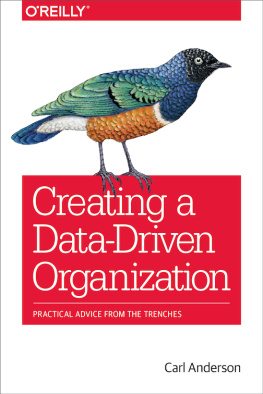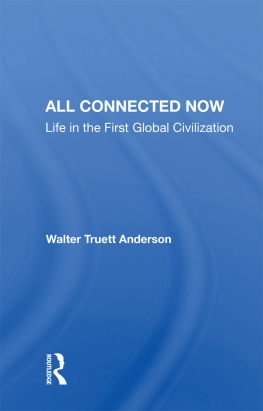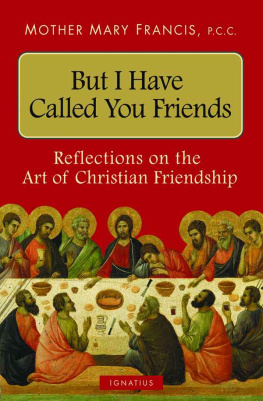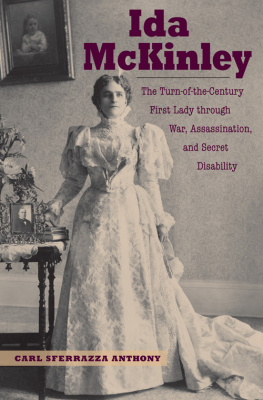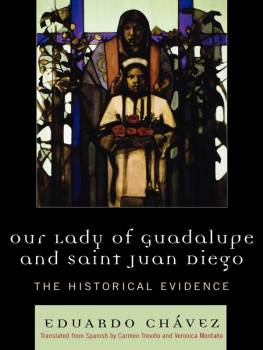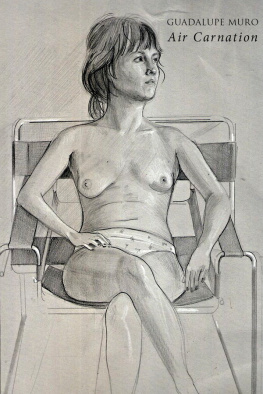Carl Anderson - Our Lady of Guadalupe: Mother of the Civilization of Love
Here you can read online Carl Anderson - Our Lady of Guadalupe: Mother of the Civilization of Love full text of the book (entire story) in english for free. Download pdf and epub, get meaning, cover and reviews about this ebook. year: 2009, publisher: Doubleday, genre: Religion. Description of the work, (preface) as well as reviews are available. Best literature library LitArk.com created for fans of good reading and offers a wide selection of genres:
Romance novel
Science fiction
Adventure
Detective
Science
History
Home and family
Prose
Art
Politics
Computer
Non-fiction
Religion
Business
Children
Humor
Choose a favorite category and find really read worthwhile books. Enjoy immersion in the world of imagination, feel the emotions of the characters or learn something new for yourself, make an fascinating discovery.

- Book:Our Lady of Guadalupe: Mother of the Civilization of Love
- Author:
- Publisher:Doubleday
- Genre:
- Year:2009
- Rating:5 / 5
- Favourites:Add to favourites
- Your mark:
- 100
- 1
- 2
- 3
- 4
- 5
Our Lady of Guadalupe: Mother of the Civilization of Love: summary, description and annotation
We offer to read an annotation, description, summary or preface (depends on what the author of the book "Our Lady of Guadalupe: Mother of the Civilization of Love" wrote himself). If you haven't found the necessary information about the book — write in the comments, we will try to find it.
Our Lady of Guadalupe: Mother of the Civilization of Love — read online for free the complete book (whole text) full work
Below is the text of the book, divided by pages. System saving the place of the last page read, allows you to conveniently read the book "Our Lady of Guadalupe: Mother of the Civilization of Love" online for free, without having to search again every time where you left off. Put a bookmark, and you can go to the page where you finished reading at any time.
Font size:
Interval:
Bookmark:
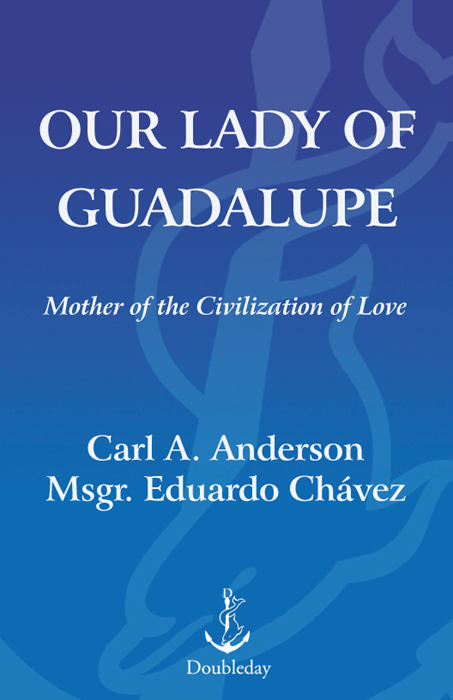
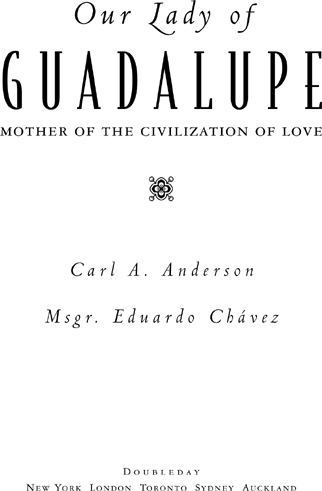
To Our Lady of Guadalupe, in the confidence that guided by her,
the people of the Christian Hemisphere will work together
to encounter her son, Jesus Christ.
Part I:
I
II
III
IV
Part II:
V
VI
VII
Part III:
VIII
IX
X
Appendix A:
Appendix B:
Appendix C:
The authors wish to acknowledge the contributions of the many people who contributed to the completion of this book. Among them are His Eminence Cardinal Norberto Rivera Carrera, Archbishop of Mexico, who so graciously allowed Msgr. Chvez to work on this book and a variety of other Guadalupe projects in the United States; Trace Murphy and the staff at Doubleday, who so patiently and carefully guided us through the process of writing and editing this book; Joe Tessitore, who has assisted us with many details of this project; the members of the Instituto Superior de Estudios Guadalupanos; and especially Maureen Hough, Jennifer Daigle, Andrew Walther, and Luis Guevara of the Knights of Columbus, whose work on so many aspects of this project is greatly appreciated.
The genesis of this book occurred on July 31, 2002, the day Pope John Paul II canonized Juan Diego Cuauhtlatoatzin in the Basilica of Our Lady of Guadalupe in Mexico City. We were both present that day in the basilica, but we had not yet met. One of us was participating in the liturgical event that he had worked to achieve for more than a decade as postulator of the Cause for Canonization of Juan Diego. The other had traveled to the basilica eighteen months earlier for his installation Mass as the head of the worlds largest organization of Catholic laymen, the Knights of Columbus. Both of us were deeply touched by our experience that day in Mexico City, and both of us realized we had witnessed one of the most profound events in the Catholic Church during John Paul IIs pontificate and indeed during our own lifetimes, an event that would give deep and lasting hope to the Catholic Church in North America.
This may strike many as an extraordinary claim; after all, John Paul II is now regarded universally as one of the greatest popes in the two-thousand-year history of the Catholic Church. As pope, he canonized and beatified hundreds of people, wrote numerous encyclicals on theological, moral, and social topics, and commissioned the Catechism of the Catholic Church, the first definitive work of its kind in more than four hundred years. He brought interreligious dialogue to new and unexpected levels while guiding the Church into the new millennium with the focus of hope in Christ. Beyond the Church, he changed the political map of Europe and the very course of history by helping to liberate nations trapped behind the Iron Curtain during the Cold War and aiding in their cause for self-determination within the Soviet Union. Beyond Europes borders, his concerns for the poor, the disadvantaged, and the war-torn brought a greater commitment to human rights and democracy, especially to Latin America and Africa. But in Mexico that day, as he knelt and prayed awhile before the image of Our Lady of Guadalupe after the ceremony, it was clear that he did not want to leave; when he rose to leave, he entrusted all people to the intercession of the newest saint in the Church. He had not only canonized a man of the past but also given our continent a saint for the future.
Yet, early in John Pauls pontificate, Our Lady of Guadalupe in Mexico was an important, perhaps even indispensable, presence. In an interesting way, John Paul IIs first invitation to the basilica was not intended for him; the Latin American Bishops Conference had extended the invitation to his predecessor the month before, and it was only his predecessors death that opened this opportunity to John Paul II.
If John Pauls pilgrimage to Mexico shaped the rest of his life as the universal pastor of the Church, his choice to visit Mexico first and his words commending Juan Diego as an evangelist expressed a new importance and new understanding of the Church in the Americas. He recognized the Americas as a hemisphere with a unique, rich Catholic history, and thus as a hemisphere with a unique, rich place in the future of the Church, a hemisphere with great ability to respond to and benefit from a renewed living out of the Gospel of love seen in the witness of the saints. It was in this context that a few months later, the cause for Juan Diegos canonization was officially opened and the Church in the Americas was reexamined and given a new focus: the new evangelization.
The story of St. Juan Diego is, of course, the story of Our Lady of Guadalupe. The event of his canonization cannot be understood apart from the events of her appearance. As with any apparition claim, every detail of the Guadalupan accounts must be examined: each The historical record suggests that Valeriano may have derived the information in the Nican Mopohua directly from Juan Diego himself, writing it down sometime before Juan Diegos death in 1548 and within two decades of the apparition. Besides this significant work, numerous historical records recall in varying degrees of detail the Guadalupan apparitions, the miraculous image, the church on Tepeyac hill, and Juan Diegos own life; some of the most substantial works include the Nican Motecpana, the Informacin de 1556, and the Informaciones Jurdicas de 1666. Other items composing the complex record of the Guadalupan event include written accounts, artwork, recorded oral testimonies, investigations, wills, and other works.
Because Juan Diego would be the first Mexican indigenous saint of that time and place, the canonization process demanded extensive research, requiring a grasp of both the history of colonization in New Spain and pre-Colonial culture and religion. Contemporary scholars, historians, and anthropologists specializing in the culture and history of Mexicos Indian people were consulted, and nearly four thousand documents related to Our Lady of Guadalupe were reviewed. Ultimately, the knowledge and insights from such research have revealed the profound relevance and symbolic richness of the apparitions and the miraculous image on Juan Diegos tilma (a cloak-like garment), showing how the Guadalupan event conveys in the language and culture of the Indians a message of hope and love.
While the facts regarding Colonial Mexico cannot be changed, the perspective advocated by historians and even the public at large has changed. Unlike many scholars of the nineteenth and early twentieth centuries, contemporary biographers and historians often highlight the Spanish conquest and occupation of Mexico as a volatile period of spiritual repression, conflict, and violence. By bringing to light the complexity of this period, contemporary research has played an enormous role in helping us to better comprehendand even test the veracity ofthe Guadalupan apparitions. But unfortunately, while the idea of conversion by the sword is now familiar, some people may view the Guadalupan apparition and devotions as a mere by-product of colonization: as a strategic devotion fabricated by missionaries seeking to convert or pacify the Indians with a Christian-Aztec story, or as a subversive devotion adopted by Indians who were confused or sought to preserve elements of Aztec religion with a faade of Christianity. Undoubtedly, the Guadalupan devotions were a cause of concern and confusion at some times, but for us this should not be surprising, considering how even today, in the Information Age, we often encounter mixed reports even on less extraordinary events. While in this book we wish to do more than judge and debate about the Catholicity of Guadalupan devotees, nevertheless it is perhaps necessary to address some generalizations about the devotion that often sidetrack readers from the religious significance of the apparitions expression of the Gospel.
Font size:
Interval:
Bookmark:
Similar books «Our Lady of Guadalupe: Mother of the Civilization of Love»
Look at similar books to Our Lady of Guadalupe: Mother of the Civilization of Love. We have selected literature similar in name and meaning in the hope of providing readers with more options to find new, interesting, not yet read works.
Discussion, reviews of the book Our Lady of Guadalupe: Mother of the Civilization of Love and just readers' own opinions. Leave your comments, write what you think about the work, its meaning or the main characters. Specify what exactly you liked and what you didn't like, and why you think so.

